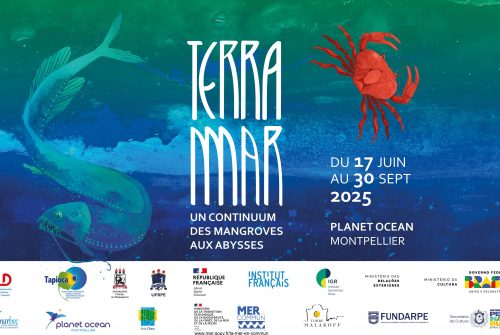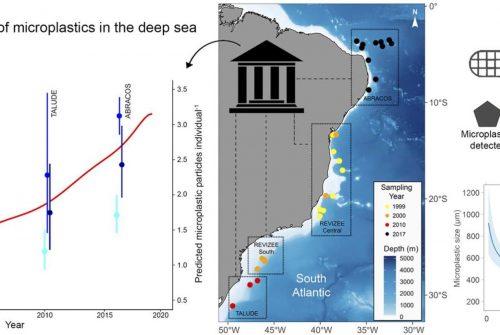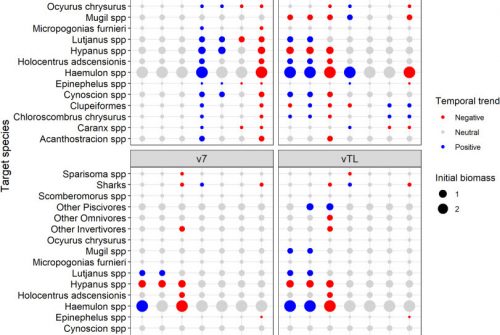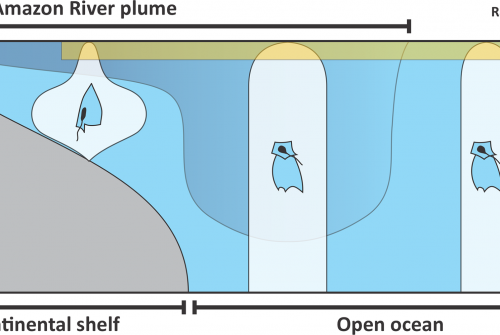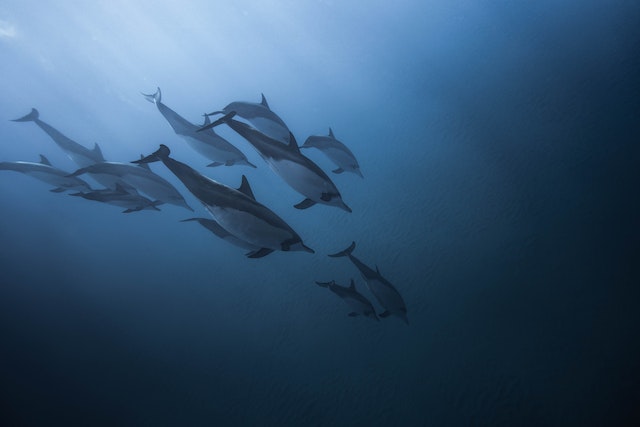
Eduardo L. N., Lucena-Frédou F., Lanco Bertrand S., Souza Lira A., Mincarone M.M., Tavares Nunes G., Frédou T., Soares A., Le Loc’h F., Pelage L., Schwamborn R., Travassos P., Martins K., Lira S.M.A., Figueiredo G., Vaske Júnior T., Ménard F., Bertrand A. 2023. From the light blue sky to the dark deep sea: trophic and resource partitioning between epipelagic and mesopelagic layers in a tropical oceanic ecosystem. Science of the Total Environnement, 878: 163098.
The connection between the epipelagic and mesopelagic layers of the seafloor controls a variety of ecosystem processes, including oceanic carbon storage and the supply of exploitable fish stocks. Traditionally, these layers have been studied in isolation and the ways in which they connect remain poorly understood. Through the wide taxonomic and trophic variety of species studied, it was possible to demonstrate that pelagic species access resources from different food sources. This leads to a marked difference in trophic relationships between vertical layers. It was also observed that trophic specialization increases in deep-water species and food availability and environmental stability are among the main causes driving this pattern.
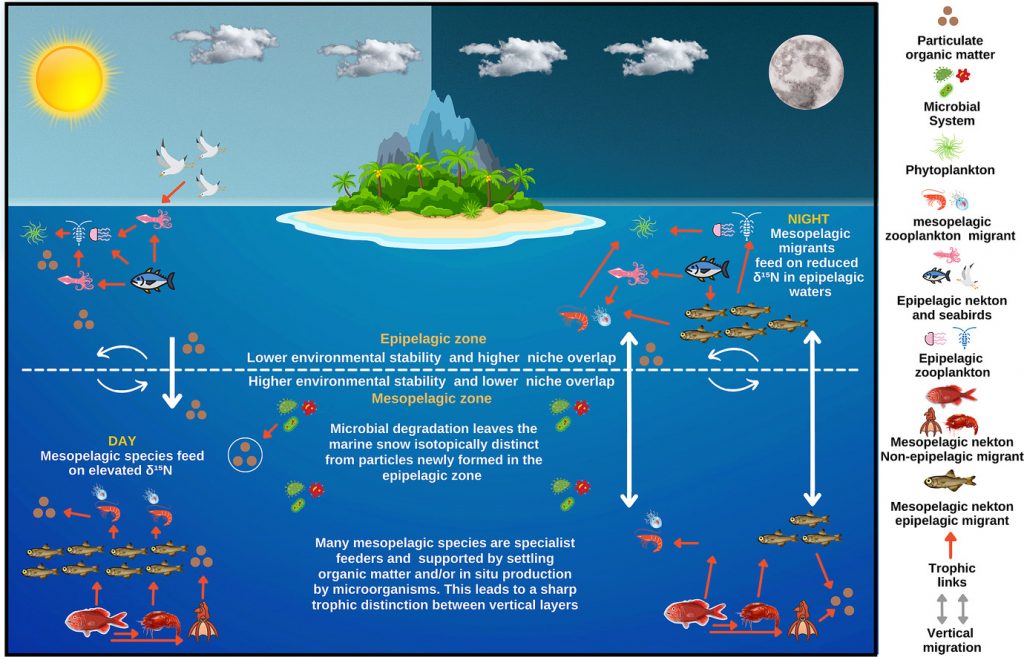
Trophic partitioning is a phenomenon that occurs when different species share food resources in the same environment. Partitioning can occur both in time and space, allowing different species to coexist in the same environment without directly competing for the same resources. In the case of the epipelagic and mesopelagic layers of the seafloor, trophic partitioning is fundamental to maintaining ecosystem balance.
Trophic partitioning is a complex topic that is still poorly understood by science. However, recent studies have advanced our understanding of this phenomenon in different ecosystems. In the case of the epipelagic and mesopelagic layers of the seafloor, the results obtained so far are promising and indicate that trophic partitioning is an important factor in maintaining biodiversity and productivity in these environments.
Artigo Do céu azul claro ao mar profundo escuro de Jejel MirandaOther references:
- Nolé, L. G., & Lessa, R. P. (2018). Decifrando a ictiofauna mesopelágica do Nordeste do Brasil. FUNBIO.
- Canaltech. (2021). O que já conhecemos do fundo do mar? https://canaltech.com.br/meio-ambiente/o-que-ja-conhecemos-do-fundo-do-mar-182967/



